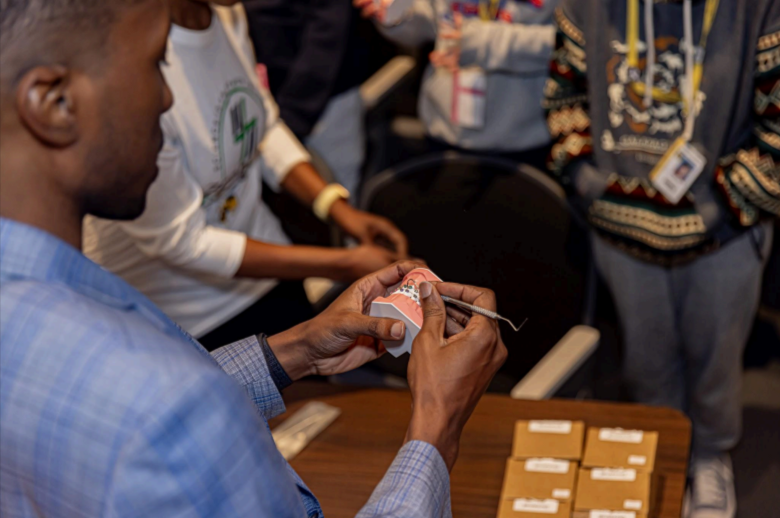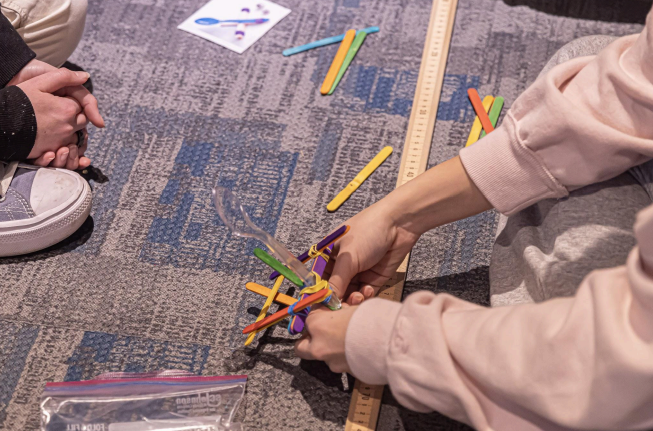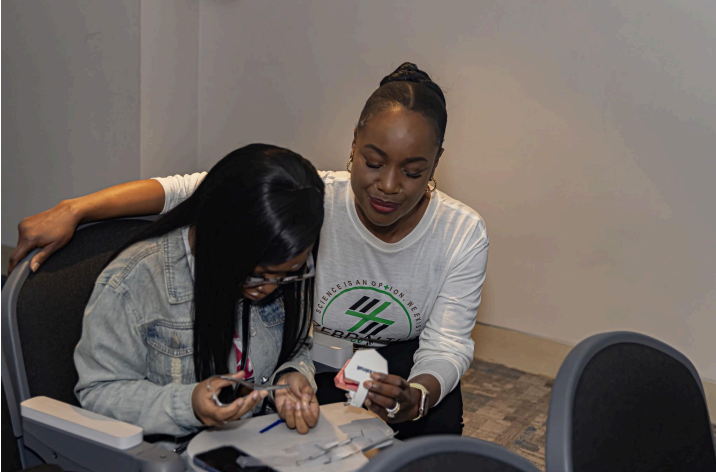
Bridging the STEM Gap Through Early Childhood Exposure
The gender and racial gap in STEM careers has gained increasing attention as educators, policymakers, and nonprofit organizations strive to create more inclusive learning environments. Despite ongoing efforts, the STEM gap remains a significant hurdle, reflecting a broader problem across science, technology, engineering, and math fields.
The persistent STEM gap is evident in workplaces, universities, and research institutions. In particular the gender gap statistics from the National Science Board show that women comprise only 34% of the science and engineering workforce in the United States, illustrating a pressing need for change. The U.S Bureau of Labor Statistics, in 2023 found women made up 16 percent of Engineers and architects.
Defining the STEM Gap
While discussions often focus on how to close the gap for STEM, the issue spans multiple dimensions. There is the overarching diversity gap that extends beyond gender, a closing the STEM gender gap imperative, a skills gap for STEM fields in which graduates lack industry-ready experience, and a STEM talent gap that leaves many jobs unfilled.
Additionally, questions of how we can bridge gaps in STEM relate to broader educational inequities, including the achievement gap that affects students from underserved communities. Each of these gaps plays a distinct role in shaping the STEM landscape.
Moreover, research shows that underrepresented racial and ethnic groups, as well as students from low-income backgrounds, face disproportionate obstacles in accessing quality STEM education. These collective challenges underscore the importance of unified efforts to expand participation and create pathways for early and sustained engagement in science and technology.
The Diversity Gap: Why It Matters
The diversity gap in STEM is especially detrimental because it limits innovation, reduces collaboration, and perpetuates societal inequities. Diverse teams generate more creative solutions and mirror the populations they serve, making their work more relevant and impactful. By addressing the diversity gap, educators and employers ensure that all voices have the opportunity to contribute, resulting in groundbreaking discoveries and inclusive technological advances.
Early Childhood Exposure: The Key to Success
One of the most effective strategies to tackle the STEM in early childhood gap lies in introducing science and technology concepts at a young age. Evidence shows that children form ideas about careers and interests early, emphasizing why STEM is important in early childhood education. Educators and parents spark curiosity and build foundational skills by introducing early childhood STEM activities.
This aligns with national studies showing that more than 80% of a child’s brain develops before age five, highlighting STEM in early childhood as a significant factor in shaping future academic paths.
These initiatives are also crucial for engaging young girls and minorities who might otherwise lose interest by the time they reach middle school. When parents and teachers demonstrate the relevance of STEM through hands-on experiences — such as coding games, nature explorations, and problem-solving tasks — it can positively influence attitudes toward STEM subjects later in life. Programs promoting STEM education early in childhood often see higher scientific literacy rates and foster a lifelong enthusiasm for discovery.
Effective Strategies to Bridge the Gap
Below are several actionable strategies aimed at combating the STEM gap through early interventions:
- Curriculum Integration: Incorporate STEM in early childhood education within language arts and social studies classes. This cross-disciplinary approach helps children see the real-world applications of scientific concepts.
- Hands-On Learning: Offer interactive projects that encourage experimentation and critical thinking. Such activities underscore the importance of STEM in early childhood by highlighting how curiosity fuels innovation.
- Professional Development: Use professional development to deliver dynamic STEM lessons to educators. Well-prepared teachers better inspire students to explore science and technology
- Mentorship Programs: Pair students with industry professionals or college interns who can provide advice, answer questions, and demonstrate STEM in action.
- Community Partnerships: Collaborate with local businesses and nonprofits like Zebralter Medical to bring real-world STEM experiences into classrooms. Our expertise and resources can expose students to cutting-edge research and potential career paths.
By implementing these measures, schools can nurture a diverse pipeline of future scientists, engineers, and medical professionals, ensuring we address today’s complex STEM gaps.
The Role of Nonprofits and Philanthropy
Nonprofit organizations play a pivotal role in closing STEM gaps. They often fund innovative school programs, scholarships, and mentorship opportunities. Groups such as Zebralter Medical exemplify this commitment by actively supporting research and educational initiatives. Our focus on equitable health care solutions ties directly to ensuring a diverse STEM workforce that can address global health challenges effectively.
Philanthropic efforts allow underserved communities to access resources that might otherwise be out of reach. By donating to nonprofit initiatives, individuals and corporations become partners in how to close the gap for STEM education. This collective approach accelerates closing the STEM gender gap and broadens participation in STEM careers.
Looking Ahead
STEM fields are evolving rapidly, with new technologies and research areas emerging yearly. The skills gap for STEM remains a hurdle, but early education programs are making headway by preparing students with 21st-century competencies. Addressing the STEM gap requires sustained partnerships between educational institutions, nonprofits, and industry stakeholders.
Parents, educators, communities, and organizations each have a role in how we can bridge gaps in STEM. Society can unlock a more innovative and equitable future by tackling the achievement gap in STEM and ensuring that all children receive high-quality STEM instruction from a young age. Encouraging early exploration and enthusiasm in science, technology, engineering, and math sets the stage for lifelong curiosity, advanced skill-building, and pioneering breakthroughs.
Ultimately, bridging the STEM gap benefits everyone. The potential for groundbreaking discoveries expands when more children grow up asking questions, testing hypotheses, and innovating solutions. Efforts driven by schools, nonprofits like Zebralter Medical, and philanthropic donors form the backbone of a movement ensuring all students succeed in today’s knowledge-based economy. These early steps not only address the gender gap in STEM careers but also ensure that tomorrow’s workforce reflects the rich diversity of our communities — fueling ideas, inventions, and research that benefit us all.
At Zebralter Medical, we are focused on increasing visibility of local healthcare professionals in our communities through our free healthcare app, Melanin Medical Specialties. Melanin Medical Specialties is the number 1 app in the nation to connect mentees and mentors while answering STEM and career questions.
We aim to make Melanin Medical Specialties the premier app for finding diverse healthcare professionals nationwide while also creating increased awareness of science as a career option for underrepresented minorities. We focus on bringing STEM careers to elementary and high schools nationwide. In addition, we support college students pursuing degrees in STEM with scholarships, helping to bridge the STEM gap to decrease and ultimately eliminate healthcare Disparities exist in communities across the nation. You can learn more about what we do or support our critical work with a donation .





